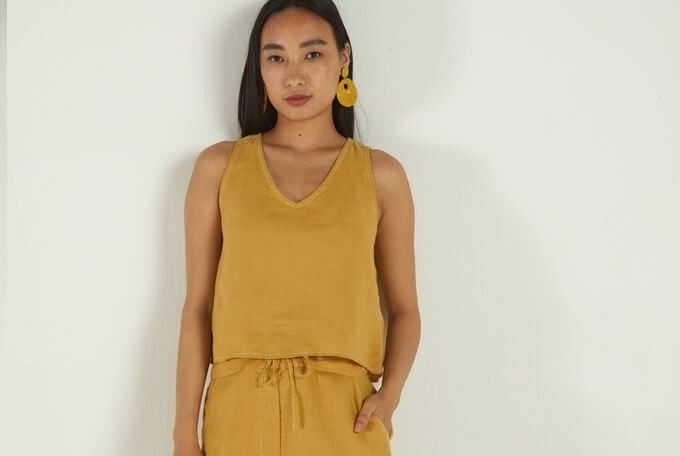Top Advice To Selecting Hemp Clothing
Wiki Article
What Are The Advantages Of Hemp Clothing Made From Low-Impact Fibres? Clothing In Terms Of The Sustainability Of The
Hemp clothing that is low impact has several environmental advantages over clothing made of other materials. This includes synthetic fibers, cotton and traditional cotton. Here are a few important environmental benefits of hemp clothing- Sustainable farmingThe hemp crop is sustainable. Hemp is a ecological crop. It grows rapidly and requires very little irrigation, herbicides or pesticides. Hemp can adapt to different climates and soil types, which reduces the need for chemical pesticides in agriculture.
Hemp requires less water as than cotton. Cotton is well-known for its excessive use of water. It makes hemp a green choice for clothing.
Hemp can be grown without pesticides and herbicides. In a lot of cases this helps reduce the impact on the environment of chemical agriculture.
Hemp cultivation can boost soil health by preventing compaction and erosion. Hemp cultivation also enhances soil fertility for future crops.
Biodegradability Hemp fibers degrade naturally and biodegradable in time. In contrast, synthetic fibers like polyester require hundreds of years to break down.
Lower Carbon Footprint Hemp fibers are made with a lower carbon foot print that synthetic materials. Furthermore, throughout its development hemp absorbs carbon dioxide from the atmosphere by acting as a carbon sink.
Hemp clothes are known to be durable and long-lasting. Hemp clothing of high quality will last for a long time. This means that there is less need to replace it frequently and also waste.
Natural Pest Resistance Hemp plants have natural resistance to a variety of pests, which reduces the necessity for chemical insecticides.
Hemp is a versatile material that has a variety of uses in textiles like clothing, accessories, bags and many more. This makes it an environmentally friendly and flexible choice for fashion and textiles.
Regenerative Agriculture- Some sustainable farming practices integrate hemp into regenerative agricultural systems that aim to improve and restore ecosystems while producing crops. This method can have a positive impact on the environment.
While hemp has many environmental benefits, its sustainability is impacted by other elements like transportation, dyeing and the behavior of consumers. Additionally, as with every industry, there could be a variety of production methods and standards. It's important to choose hemp clothing that is organic or sustainable options to ensure the highest environmental benefits. Have a look at the top recommended reading for hemp clothes for website recommendations including hemp sportswear, patagonia island hemp pants, hemp hoodie, hemp polo shirts, patagonia work pants hemp, mens hemp clothing, hemp shirts wholesale, hemp clothing for men, hemp work pants, hemp tees wholesale and more.

How Can Hemp Be Used To Improve Carbon Sequestration And Sustainability?
Hemp fibers aid in carbon storage, sustainability and crop rotation in a variety. They are an ideal option for agricultural and textile production.
Fast growth- Hemp is a fast-growing plant that matures within 70-120 days, depending on the variety and growing conditions. Hemp plants absorb carbon dioxide (CO2) during their rapid growth stage as part of their photosynthesis process. The process of carbon absorption could significantly reduce the amount of CO2 by storing it.
Biomass Production- Hemp is renowned for its prolific production of biomass. The tall stalks of the plant and dense foliage yield a large amount of organic matter. The biomass can be used to build up organic carbon in soils or for various other purposes.
Sustainability:
Hemp farming requires less synthetic pesticides. It also uses fewer herbicides. Its natural resistance decreases its need for chemical interventions. Organic hemp farming, particularly is a sustainable approach, eliminating synthetic chemicals completely.
Hemp is a water efficiency, compared with other crops that require lots of water, such as cotton. This helps hemp to be more viable in areas with less water resources.
The hemp's deep root system enhances the health of soil. The hemp's roots aid to reduce soil erosion by stabilizing soil's structure and decreasing runoff. Hemp cultivating can also increase the microbial activity in soil. This promotes nutrient cycle and overall soil fertilty.
Hemp can be used in crop rotation. Crop rotation involves the alternation of different crops within a single field. This method helps break the cycle of disease and pests as well as reduce soil erosion and improve the soil's structure. Hemp’s role in crop rotating helps to ensure sustainability.
Crop Rotation
Hemp is also a good addition to rotations of crops alongside other crops, such as vegetables, legumes or grains. This helps farmers maintain soil quality, reduce the risk for pests, diseases, and other problems related to crop as well as promote a balanced cycle of nutrients.
Soil Improvement- Hemp's deep roots can penetrate and aerate soil, reducing compaction and enhancing water infiltration. Following the harvest of hemp the improved soil structure benefits future crops that follow in the cycle.
Hemp fibers are a great option for crop rotation due to of their fast growth rate, their the high yield of biomass, their low chemical needs, water efficiency, positive impact on soil health and compatibility. These characteristics make hemp production a sustainable and regenerative agriculture practice. The resulting fibers can be used for textiles or other eco-friendly applications. Have a look at the recommended hemp clothes for blog recommendations including hemp tee shirts, hemp button shirt, hemp jeans, hemp coat, patagonia ranch jacket, hemp pants womens, patagonia double knee pants, patagonia iron forge pants, dash hemp clothing, hemp yoga clothes and more.

What are the differences in bamboo and hemp fibers?
The two fibers from plants, hemp as well as Bamboo are used in the production of textiles and have their distinct characteristics and properties. Here are the major distinctions between hemp and bamboo fibers. Plant Source-
Hemp Fibers- Hemp fibers can be obtained from hemp stalks, and more specifically, the bast that is outside. Hemp is an adaptable and quick-growing crop which has been utilized in a variety of ways over the years.
Bamboo fibers can be produced from the pulp produced by the bamboo plant. Bamboo is a fast-growing grass species that is known for its quick renewal and long-term sustainability.
2. Fiber Characteristics
Hemp- Hemp fibres are well-known for their strength and long-lasting. They are some of the strongest natural fibres, and they become softer after every wash. They are perfect for textiles that are durable.
Bamboo Bamboo fibers are exceptionally soft and silky in texture. These fibers may be softer and less robust than hemp, but are appreciated for their comfort.
3. Texture and Feeling-
Hemp fabric is a bit coarse and has a textured texture. This is particularly true in its natural state. Although it can be a comfortable fabric, the texture is distinct from bamboo.
Bamboo fabric is smooth and silky. It's extremely soft. It's described as feeling like a blend of silk and cotton, which makes it extremely comfortable to wear.
4. The ability to breathe and the moisture-wicking properties-
Hemp- Hemp fibers are naturally water-wicking and breathable, which allows the circulation of air and absorption of moisture. They help you stay cool and dry even in the hottest temperatures.
Bamboo is also extremely permeable, and it is able to wick away water. They have micro-gaps that enhance their capacity to regulate moisture and temperature, which keeps you at ease in all conditions.
5. Environmental Impact-
Hemp Hemp is regarded as an eco-friendly fiber due to its rapid growth, its low need for water as well as its resistance to insect bites which makes it less important to use pesticides. Hemp can also sequester carbon during its growing process.
Bamboo- Bamboo is famous for its sustainability. It is fast-growing and requires minimal water and can be cultivated without pesticides or herbicides. Certain bamboo varieties, such as Moso bamboo are extremely ecological.
6. Processing-
Hemp- Hemp requires extensive processing to separate its outer bast fibers (outer woody core) from the woody inner fibers. Processing may include retting or decortication.
Bamboo- Bamboo fibres are typically obtained through a chemical procedure called the viscose or rayon process. This process involves breaking down bamboo pulp by using chemical. Some bamboo textiles however, employ closed-loop techniques to reduce chemical waste.
7. Versatility-
Hemp- Hemp fibres can be used for a variety of purposes, such as clothing, textiles and paper. They are also great construction materials.
Bamboo fibers are used in a wide range of products, such as sheets and towels.
In summary, both hemp and bamboo have distinct qualities and sustainability advantages. The choice between them depends on which qualities you seek in a fabric and your environmental preference. Have a look at the most popular bamboo clothing info for site tips including halloween bamboo pajamas, carter's bamboo pajamas, bamboo t shirts wholesale, bamboo shirts wholesale, women's freefly apparel, bamboo tee shirts mens, boody bamboo underwear, short sleeve bamboo pajamas, bamboo long sleeve shirt, ladies bamboo pants and more.
